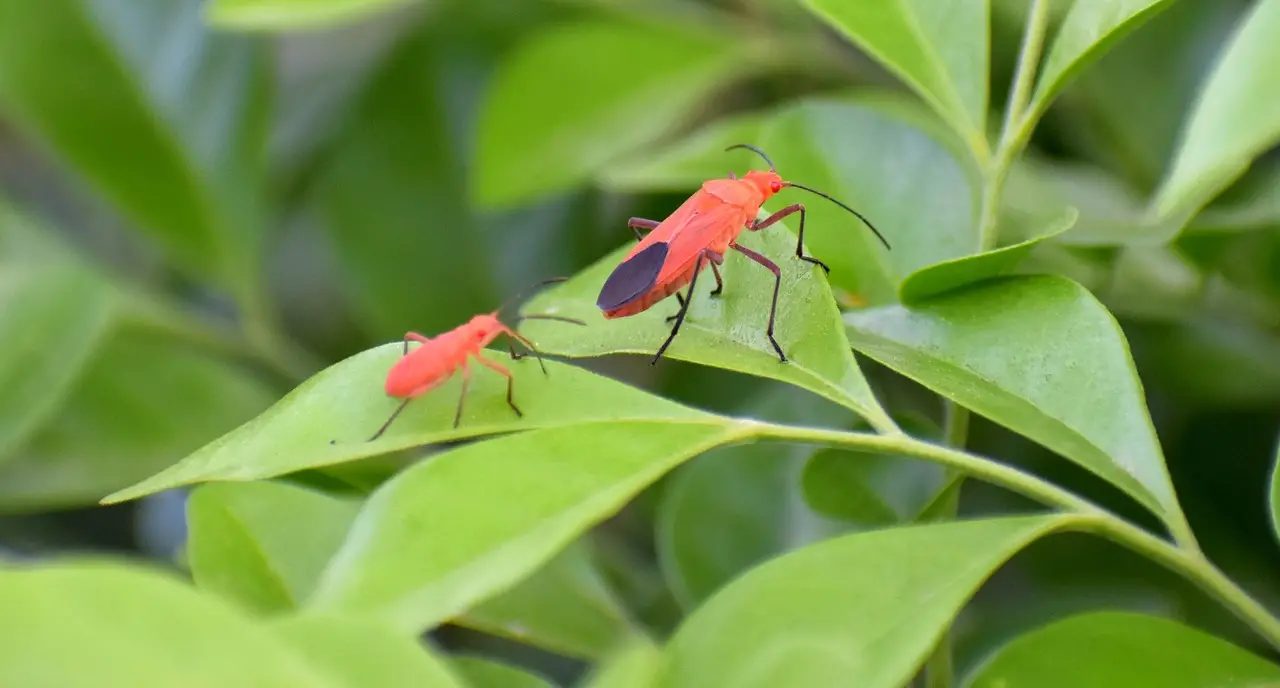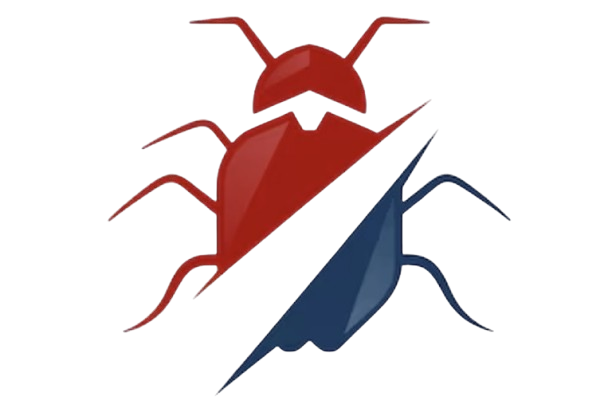Pest Lockdown
Are Boxelder Bugs Related to Cockroaches?

When it comes to household pests, few creatures are as universally disliked as cockroaches. Their resilience, ability to multiply quickly, and association with unclean environments make them a significant nuisance. On the other hand, boxelder bugs, though less notorious, can still be a common pest, particularly in the fall when they seek shelter in homes. A frequent question among homeowners is: Are boxelder bugs related to cockroaches?
In this article, we’ll delve into the characteristics, behaviors, and relationships of these two insects to provide a comprehensive answer.
Understanding Boxelder Bugs
Appearance and Habitat
Boxelder bugs (Boisea trivittata) are easily identifiable by their distinct black and red-orange markings. They are about half an inch long with flat, elongated bodies. These insects are commonly found in North America and are particularly associated with boxelder trees, although they can also be found on maple and ash trees.
Life Cycle and Behavior
Boxelder bugs go through three life stages: egg, nymph, and adult. They lay their eggs on the leaves or in the crevices of boxelder trees during spring. The eggs hatch into nymphs, which are bright red and gradually develop into adults over several weeks.
In the fall, boxelder bugs seek warm places to overwinter, often making their way into homes. While they do not reproduce indoors, their presence can be a nuisance. They are primarily a problem due to their tendency to gather in large numbers and their potential to stain surfaces with their excrement.
Diet and Impact
Boxelder bugs feed on the seeds and leaves of boxelder trees, but they do not cause significant damage to their host plants. Inside homes, they do not bite, spread disease, or cause structural damage. However, their sheer numbers and the mess they create can be bothersome to homeowners.

Understanding Cockroaches
Appearance and Habitat
Cockroaches are a diverse group of insects belonging to the order Blattodea. Common household species include the American cockroach (Periplaneta americana), the German cockroach (Blattella germanica), and the Oriental cockroach (Blatta orientalis). These pests vary in size from half an inch to over two inches and typically have flat, oval bodies with long antennae.
Cockroaches thrive in warm, humid environments and are often found in kitchens, bathrooms, and other areas where food and moisture are readily available. They are notorious for their ability to hide in small crevices and their preference for dark, hidden areas.
Life Cycle and Behavior
Cockroaches undergo incomplete metamorphosis, passing through three life stages: egg, nymph, and adult. Female cockroaches produce egg cases (oothecae), which they deposit in secure locations. The eggs hatch into nymphs, which resemble smaller versions of adults and gradually mature through several molts.
These pests are nocturnal and highly adaptable, making them difficult to control. Cockroaches are known for their rapid reproduction and can quickly infest a home if not addressed promptly.
Diet and Impact
Cockroaches are omnivores and scavengers, feeding on a wide range of organic materials, including food scraps, grease, and even paper products. Their feeding habits and movement between unsanitary areas and food surfaces make them vectors for various diseases, including salmonella, E. coli, and allergens that can trigger asthma and other respiratory conditions.

Comparing Boxelder Bugs and Cockroaches
Taxonomy and Relation
Despite both being insects, boxelder bugs and cockroaches are not closely related. Boxelder bugs belong to the order Hemiptera, commonly known as “true bugs,” while cockroaches are part of the order Blattodea. This fundamental taxonomic difference highlights that these insects belong to entirely different groups with distinct evolutionary histories.
Physical Differences
Boxelder bugs and cockroaches have noticeable differences in appearance. Boxelder bugs are characterized by their striking black and red-orange coloration and flat, elongated bodies. In contrast, cockroaches have a more uniform brown or black color and a more oval, flattened body shape. Additionally, cockroaches possess long antennae and are generally more robust in structure compared to the slender boxelder bugs.
Behavior and Habitat
The habitats and behaviors of these insects also differ significantly. Boxelder bugs are primarily outdoor insects associated with specific tree species, and generally only venture indoors during the colder months. Cockroaches, however, are well-adapted to indoor environments and can thrive in a variety of settings, particularly where food and moisture are abundant.
Impact on Humans
The impact of boxelder bugs on humans is mostly limited to being a nuisance due to their tendency to enter homes in large numbers. They do not pose health risks or cause structural damage. On the other hand, cockroaches are considered major pests due to their potential to spread diseases, contaminate food, and trigger allergies and asthma. Their presence is often associated with poor sanitation, although they can invade even the cleanest of homes.

Managing Boxelder Bugs and Cockroaches
Prevention and Control of Boxelder Bugs
Preventing boxelder bug infestations primarily involves making your home less accessible to them. Here are some steps to consider:
- Seal Entry Points: Inspect your home for any cracks, gaps, or openings and seal them with caulk or weatherstripping. Pay particular attention to areas around windows, doors, and vents.
- Reduce Outdoor Attractants: Boxelder bugs are attracted to boxelder trees. If feasible, consider removing these trees or at least keeping them away from the house.
- Indoor Management: If boxelder bugs do enter your home, vacuum them up and dispose of the vacuum bag immediately. Avoid crushing them as they can stain surfaces.
- Professional Help: For severe infestations, contacting a pest control professional can provide more targeted solutions.
Prevention and Control of Cockroaches
Controlling cockroach infestations requires a more comprehensive approach due to their resilience and rapid reproduction. Here are some effective strategies:
- Maintain Cleanliness: Keep your home clean and free of food scraps and spills. Regularly clean kitchen surfaces, appliances, and food storage areas.
- Eliminate Moisture: Moist environments are one of the many things that attract cockroaches, which is why it is important to fix any leaks and ensure that areas prone to moisture, such as kitchens and bathrooms, are kept dry.
- Seal Entry Points: Like with boxelder bugs, seal any cracks and crevices that cockroaches could use to enter your home.
- Professional Extermination: For severe infestations, professional pest control services can offer more potent treatments, including insecticides and integrated pest management (IPM) strategies.
- Use Baits and Traps: Cockroach baits and traps can help reduce the population by targeting them directly. Place these in areas where cockroaches are commonly seen. Here are some of our favorite tested products:
Black Flag Roach Motel Insect Trap, 12-Pack 12 Pack Trap
- EFFECTIVE CONTROL: Traps roaches, waterbugs; Palmetto bugs; spiders; crickets and scorpions
- HIDES DEAD BUGS: Conceals dead insects – just throw trap away when full
- PESTICIDE FREE: Contains no pesticides and no pesticide fumes or odors
- ATTRACTS ROACHES: Special lure attracts roaches into the trap; where they become stuck to the glue surface
- GUARANTEED: Guaranteed to work or your money back – see product label for details
Sale
Raid Concentrated Deep Reach Fogger, 1.5 OZ (2)
- Kills ants, roaches & spiders
- Penetrates into cracks & crevices to kill bugs where they live & breed
- Keeps killing for up 2 months
- Non-staining. No wet, messy residue.
- Deep Reach fogger
Sale
MGK Vendetta Plus Cockroach Gel (4 Tubes) Bait & IGR Killer Paste Not for Sale to: California, 4 Oz
- Vendetta Plus Cockroach Gel Bait (4tubes) Roach Bait & Igr Roach Killer Paste Not For Sale To: California.Does not contain peanuts, shellfish, dairy, tree nuts, fish or wheat
Final Thoughts
In summary, while boxelder bugs and cockroaches are both unwelcome guests in our homes, they are not related and differ significantly in terms of appearance, behavior, and impact on human health. Boxelder bugs are primarily a seasonal nuisance with no significant health risks, whereas cockroaches are persistent indoor pests associated with various health hazards.
Understanding these differences can help homeowners effectively manage and prevent infestations. By implementing preventive measures and seeking professional assistance when necessary, you can keep your home free from these and other pests, ensuring a safe and comfortable living environment.
When faced with the question, “Are boxelder bugs related to cockroaches?” you can confidently answer no, knowing that these two insects, despite their similarities in being household pests, belong to entirely different families and pose different challenges to homeowners.
Frequently Asked Questions
Are Boxelder bugs the same as maple bugs?
Yes, boxelder bugs and maple bugs are the same insects. They are often called maple bugs because they are commonly found on maple trees as well as boxelder trees. The terms are used interchangeably to refer to Boisea trivittata, a species known for its distinctive black and red markings.
What do maple bugs eat?
Maple bugs, or boxelder bugs, primarily feed on the seeds, leaves, and twigs of boxelder, maple, and ash trees. They use their piercing-sucking mouthparts to extract sap from the leaves and seeds. While their feeding can cause some cosmetic damage to the plants, it does not usually harm the overall health of the trees.
What do Boxelder bugs eat in the winter?
During the winter, boxelder bugs enter a state of dormancy and do not actively feed. They seek out warm, sheltered places, often inside homes or buildings, to overwinter. In this dormant state, they rely on stored body fats to survive until temperatures rise again in the spring.
Last update on 2024-06-15 / Affiliate links / Images from Amazon Product Advertising API. Please note that this page contains affiliate links, and we may make a commission from any purchases made through these links, at no additional cost to you.



